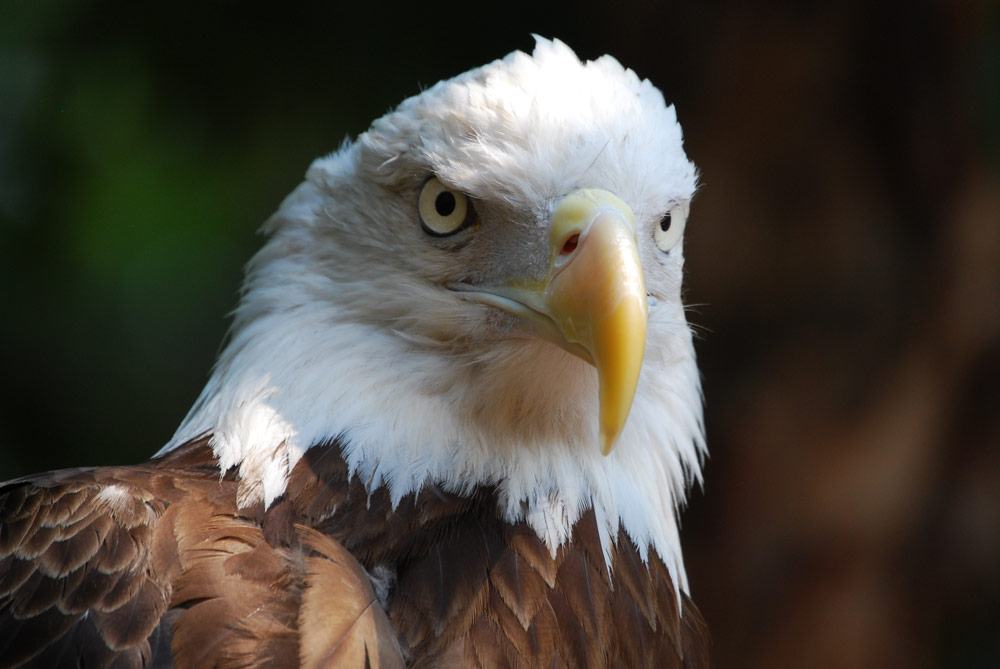Category:
BirdsAbout
Bald eagle
Our national bird, the bald eagle (Haliaeetus leucocephalus) is one of the largest raptors in Virginia with a wingspan of up to 8 feet. The female is larger than the male and can weigh up to 14 pounds. The large size and white head and tail feathers of an adult bald eagle and the bright yellow, hooked bill make this bird easy to recognize. The “bald” in its name comes from an archaic word that translates as “white.” Young eagles are born brown and do not grow all their white feathers until they reach sexual maturity at 5-6 years old.
Bald eagle pairs mate for life. These birds build huge stick nests in the tops of sturdy trees. The nests are enlarged year after year with some becoming more than 6 feet across and 3 feet deep. Breeding usually begins in November but can last until July. The female lays 2-3 eggs. Although the female does most of the incubating, the male sometimes helps. Both parents care for the young for the first three months.
Bald eagles are primarily fish hunters but have been known to feed on dead animals and even steal prey from osprey.
It is ironic that the bald eagle, our national bird, almost became extinct due to DDT which caused these birds to lay thin-shelled eggs which broke when the eggs were incubating. Although they are protected from being hunted, eagles are still sometimes shot and poisoned by people who mistakenly think they prey on livestock.
Bald eagles are a conservation success story. They have been removed from the federal and state endangered species lists and are becoming much more commonly seen. In 2011 there were more than 700 breeding pairs in Coastal Virginia.
You can see bald eagles up close in their habitat along the Virginia Living Museum’s outdoor boardwalk.
Help pay for my food and care at the Virginia Living Museum by adopting me today.






